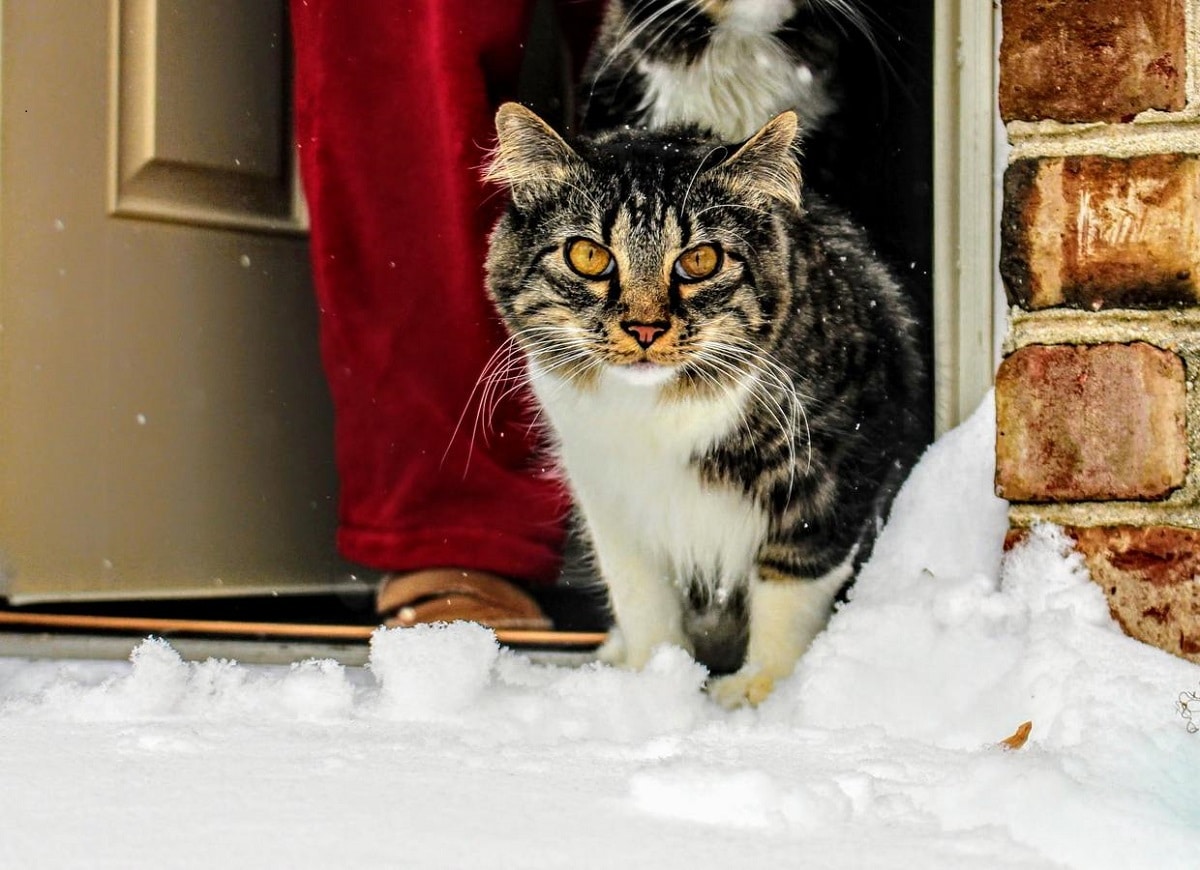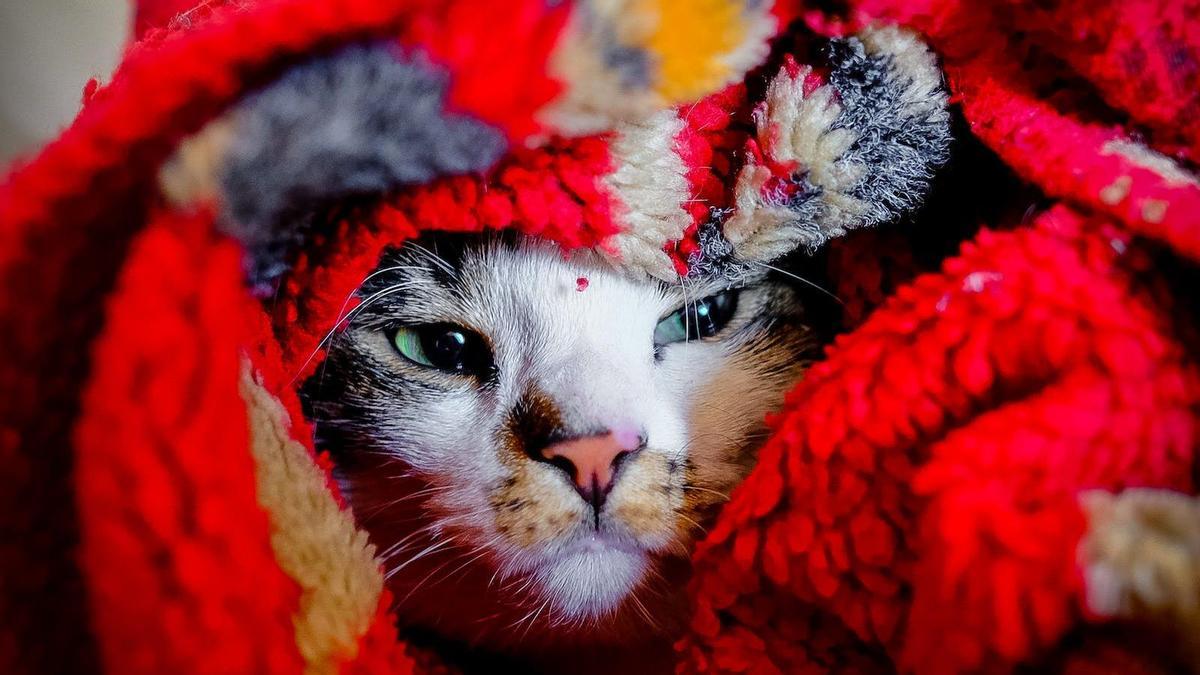Do you ever wonder if your fluffy friend gets chilly when the temperature drops? Cats and cold weather is a topic that has sparked curiosity among pet owners worldwide. Just like humans, cats can feel the cold, but their tolerance varies depending on factors like breed, fur thickness, and overall health. If you've ever seen your cat curling up in a cozy spot or seeking warmth under blankets, you're witnessing firsthand how they adapt to cooler environments. So, let's dive deeper into this intriguing question: do cats really get cold, and how can we ensure their comfort during colder months?
As a devoted cat lover, understanding your feline companion's needs is essential for their well-being. While some breeds are built for colder climates, others may struggle when temperatures plummet. This article will explore the science behind how cats regulate their body temperature, the signs of cold stress, and practical tips to keep your furry friend warm and happy. Whether you live in a snowy region or experience occasional cold snaps, knowing how to care for your cat in chilly weather is crucial.
Before we get into the nitty-gritty, it's worth noting that cats are incredibly adaptable creatures. From ancient times, they've evolved to thrive in diverse environments, from deserts to mountainous regions. However, domesticated cats rely on us to provide the comfort and care they need when the weather turns unfavorable. By the end of this article, you'll have a comprehensive understanding of how to ensure your cat stays cozy and healthy no matter the season.
Read also:Dave Navarro And Girlfriend The Rockstars Love Life Unveiled
Understanding Cat Physiology and Temperature Regulation
To answer the question "do cats feel cold," we need to delve into their physiology. Cats, like all mammals, are warm-blooded, meaning they can regulate their body temperature internally. Their normal body temperature ranges between 100.5°F and 102.5°F (38.1°C to 39.2°C), which is slightly higher than humans. This natural warmth helps them maintain energy and stay active, even in cooler environments. However, when the external temperature drops significantly, their ability to stay warm can be challenged.
Cats have several mechanisms to conserve heat. For instance, their fur acts as insulation, trapping warm air close to their skin. Short-haired breeds may struggle more in cold weather compared to their long-haired counterparts. Additionally, cats have a unique habit of curling up into tight balls, which minimizes heat loss by reducing their exposed surface area. Despite these adaptations, extreme cold can still pose risks, especially for older cats, kittens, or those with medical conditions.
Signs Your Cat May Be Feeling Cold
Recognizing the signs of cold stress in cats is vital for their well-being. While some behaviors are obvious, others might be subtle and require keen observation. Here are a few indicators that your cat might be feeling the chill:
- Curling up tightly in secluded spots
- Shivering or trembling
- Seeking warmth near heating vents or under blankets
- Reduced activity levels
- Hiding in enclosed spaces
If you notice any of these behaviors, it's a good idea to take steps to warm your cat up. Providing extra bedding, heated pads, or even a warm towel can make a significant difference. Remember, a cat's body language often speaks louder than words, so paying attention to their actions can help you gauge their comfort level.
Factors Affecting a Cat's Tolerance to Cold
Not all cats react the same way to cold weather. Several factors influence how well they can tolerate chilly temperatures:
Breed and Fur Type
Certain breeds are naturally better suited for cold climates. For example, the Maine Coon, Siberian, and Norwegian Forest Cat have thick, double-layered coats that provide excellent insulation. On the other hand, short-haired breeds like the Sphynx or Devon Rex may struggle in cooler environments and require additional protection.
Read also:Angel Brinks First Husband Unveiling The Untold Story
Age and Health
Kittens and senior cats are more vulnerable to cold temperatures due to their developing or declining immune systems. Similarly, cats with health issues, such as arthritis or hypothyroidism, may have a harder time regulating their body temperature. Ensuring these cats have access to warm, draft-free spaces is essential for their comfort and safety.
Creating a Warm and Cozy Environment for Your Cat
Now that we understand how cats experience cold, let's explore practical ways to keep them comfortable during colder months:
Providing Extra Bedding
Soft, fluffy blankets or cushions can make a big difference in your cat's comfort. Place these in draft-free areas where your cat likes to rest. Consider using heated beds or pads designed specifically for pets, as they provide gentle warmth without the risk of overheating.
Minimizing Drafts
Cats dislike drafts, so sealing windows and doors can help maintain a consistent indoor temperature. You can also use draft stoppers or weatherstripping to prevent cold air from entering your home.
Adjusting Feeding Habits
In colder weather, cats may require slightly more calories to maintain their energy levels and body heat. Consult your veterinarian to determine if adjusting their diet is necessary during the winter months.
Common Myths About Cats and Cold Weather
There are several misconceptions surrounding cats and their ability to withstand cold temperatures. Let's debunk a few of these myths:
- Cats don't get cold because they have fur: While fur provides insulation, it's not foolproof, especially in extreme weather conditions.
- Indoor cats are immune to cold: Even indoor cats can feel the chill if their environment isn't properly heated.
- Cats can survive outdoors in winter: Leaving cats outside in freezing temperatures can be dangerous and even life-threatening.
By separating fact from fiction, we can better protect our feline friends from the adverse effects of cold weather.
How Outdoor Cats Cope with Cold Weather
For cats that spend time outdoors, surviving cold weather requires additional considerations. While some outdoor cats adapt by finding shelter in sheds, garages, or under cars, they still face risks such as frostbite and hypothermia. If you care for outdoor cats, providing them with a warm, insulated shelter and fresh water is crucial. Consider using heated water bowls to prevent freezing and offering extra food to help them maintain their energy reserves.
Creating a Safe Outdoor Shelter
A well-designed outdoor shelter can make a significant difference for feral or stray cats. Use materials like straw or blankets for insulation, and ensure the entrance is small enough to keep out wind and predators. Elevating the shelter off the ground can also help prevent heat loss.
The Importance of Veterinary Care in Cold Weather
Regular check-ups with your veterinarian are essential, especially during colder months. They can assess your cat's overall health and identify any underlying conditions that might affect their ability to regulate body temperature. Additionally, your vet can recommend supplements or dietary changes to support your cat's immune system during the winter.
Recognizing Signs of Hypothermia in Cats
Hypothermia occurs when a cat's body temperature drops below normal levels. Symptoms include lethargy, weakness, shallow breathing, and pale gums. If you suspect your cat is experiencing hypothermia, wrap them in a warm blanket and seek veterinary care immediately.
Conclusion: Keeping Your Feline Friend Warm and Happy
In conclusion, cats can indeed feel cold, but their ability to adapt depends on various factors like breed, age, and overall health. By understanding their needs and taking proactive steps to ensure their comfort, you can help your furry companion thrive in any weather condition. Remember to provide extra bedding, minimize drafts, and monitor their behavior for signs of cold stress.
We invite you to share your experiences or ask questions in the comments below. Your insights might help fellow cat lovers create a cozier environment for their beloved pets. And don't forget to explore other articles on our site for more tips and tricks to enhance your cat's well-being.
Table of Contents
- Understanding Cat Physiology and Temperature Regulation
- Signs Your Cat May Be Feeling Cold
- Factors Affecting a Cat's Tolerance to Cold
- Creating a Warm and Cozy Environment for Your Cat
- Common Myths About Cats and Cold Weather
- How Outdoor Cats Cope with Cold Weather
- The Importance of Veterinary Care in Cold Weather
- Conclusion: Keeping Your Feline Friend Warm and Happy
Additional Resources
For further reading, check out these trusted sources:


